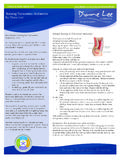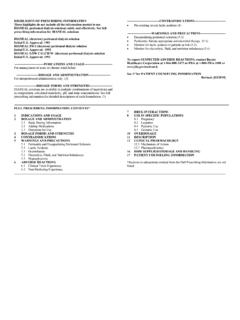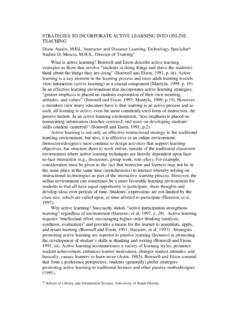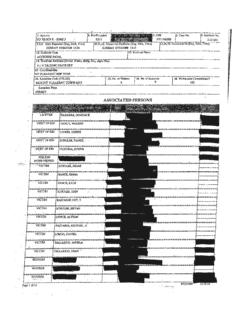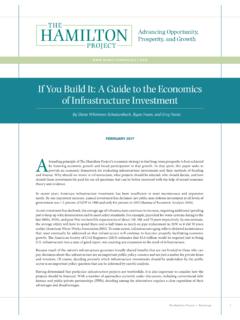Transcription of By Diane M. Ruebling
1 Ave you ever been in a study group where you gotgreat ideas but didn t implement them? Or after a com-pany meeting where best practices were shared, you mayhave wanted to put one or two into practice, but dailyactivity and challenges prevented your follow through? Youare not alone! This is a common phenomenon for both lead-ers and advisors in financial services. Most people have goodintentions and want to implement good ideas or make thechanges they know are necessary to grow. But too often the inspirationfades when hot fires need to be extinguished and plans to improvemove to the back often differentiates the very successful from the ago, as a new field leader for veteran advisors, I knew I needed tofind a better way to get results. action learning Teams became thevehicle for my success and for the success of many of my advisors. Inmy first year as a field leader, I got a 30% increase in veteran productiv-ity.
2 Later in my career, I discovered the power of using the same ActionLearning process to develop my leaders. action learning Teams cantruly make the difference between good intentions and great executionthat gets measurable results. action learning is a dynamic process where a team meets regularlyto help individual members address real issues through a highly struc-tured, facilitated team process of reflection and action . Peer accounta-bility and visibility ofplan execution are powerful motivators that getresults for the individual team member and meaningful experientiallearning for of colleagues meet, in a monthly facilitated session, to focus onreal-time work issues commonly called bottlenecks. The team focus-es on one member at a time, called the focus team member. A uniquepeer-questioning process helps the focus team member identify biasesand assumptions that drive his or her thinking and behaviors.
3 Using thisstructured process of inquiry, the team seeks to help the focus teammember select changes or actions that lead to greater results. The focusteam member commits to a plan (specific steps that he or she will takebetween this month s meeting and the next) and then reports back onwhat worked and didn t work at the following meeting. Research hasshown that people will break commitments to themselves or even theirmanagers much more easily than they will to their peers. This methodof peer accountability is extremely important and is one of the key suc-cess factors of action learning . When the focus team member sharesthe results of the action steps they implement, everyone on the teambenefits and true experiential learning occurs. action learning has existed in various formats for over sixty years andhas many variations. At the end of the this article you will find TheAction learning model that I developed.
4 As you can see it is a cyclicalmodel with processes and outcomes. Following you will find descriptionsof these processes and outcomes starting with Awareness in the left-hand corner ofthe model and continue let s look at a hypothetical focus team member going through theprocess. The leader in our example, Jack, is a branch manager respon-sible for 200 financial Diane M. RueblingJanuary/February 2007 What is action learning ?How Does action learning Work?The first step in action learning is to examine where you are in rela-tion to your business plan and personal goals. We are often so busy withday-to-day activity that we don t stand back to take in the big matter how well you are doing, chances are that you have two orthree bottlenecks any issue or challenge preventing you from achiev-ing your to the team meeting, Jack has a coaching session with a facilita-tor. In that meeting, Jack takes stock of where he and his business areand, with the coach s help, identifies his most critical bottlenecks.
5 (Having this heightened awareness of his bottlenecks is a valuable out-come in itself.) When he meets with the team, Jack begins his ActionLearning discussion by sharing highlights of his business plan and year-to-date results. Then he says his dwindling recruiting pipeline is his mostcritical learning uses a very structured, facilitated questioning processto explore a bottleneck. At an action learning kickoff meeting, teammembers are trained in the action learning process, including how toask questions rather than to give advice. The questions cover four mainareas:1. Factual questionshelp the team to understand the specifics ofthe bottleneck. What objective information about the situationwould be helpful in determining future actions? Jack may be askedquestions such as: Who has recruiting responsibilities in yourbranch? What percentage of your time do you spend on recruiting?What are your major sources of prospects?
6 What has changed sincelast year when you hit your recruiting goals? What do you use fortracking? How do you hold your leaders accountable?2. Feeling questionsseek to uncover emotions and filters associat-ed with the bottleneck that is, how does Jack perceive the issue?Many times recognizing the filters and emotions can uncover con-scious or subconscious thoughts that affect the end goal. Jack is obvi-ously concerned, but is he angry, frustrated, stumped, conflicted?Jack shares with the team that after having such a good recruitingyear last year, he is embarrassed and about how things have fallenapart this year. He is also fearful that if he doesn t act quickly, hewon t be able to meet his recruiting goals for this Possibility questionsseek out new ways of thinking about theissue. They help the focus team member get outside the box to avariety ofpossible actions. It explores best-case and worst-casescenarios as well as helps the team member get creative about solu-tions.
7 Jack and his team spend the majority of the inquiry processwith these interpretive questions. The team asks questions such as:What are three creative things you could do to increase yourpipeline? What would be the riskiest thing you could do and whatwould be the safest thing you could do? What resources can youleverage to help you with this bottleneck? Until this point, the mem-bers have not shared their thoughts or ideas; they have only askedquestions. Now they get to laser share information that might behelpful to Jack. For instance, one team member encourages Jack toconsider updating his tracking system. 4. Decisional questionshelp Jack get specific about clear, tangibleactions to implement between this meeting and the next. They vestretched Jack s thinking; now the time for commitment has team asks Jack to tell them what he has decided to commit to forAction learning . They follow up with questions to get him to be asspecific as possible.
8 Follow up decisional questions could deal withtiming, resources, who else will be involved and so forth. While going through the questioning process, the focus team membermay experience a common outcome called unfreezing. This unfreez-ing often refutes a person s cherished assumptions and replaces themwith a more empowering paradigm from which to operate. It also hasthe power to take an old idea and uncover new, more effective waysto implement takes notes on his own ideas or thoughts that the team s questionstriggered as well as notes on insights and suggestions from the notes help him decide what actions he will commit to. In thiscase, Jack gained a renewed passion for doing what had worked for himin the past. He realized that he had stopped taking some critical stepsthat were key to his past successes. He also recognized the potential ben-efit ofadding more recruiting staff, leveraging additional resources andraising the level of tracking and accountability.
9 A focus team member takes into account these insights, possibilitiesand feedback and creates a plan to implement between the currentmeeting and the next meeting. The team reviews the plan to make surethat the plan specifies what will be done by when. Jack now makes hiscommitment to the group to do the following:1. He will identify additional staff to be included in the recruitingpipeline meetings. He will meet with those individuals to clarifyexpectations and revisit their roles and He will update the tracking system to be more detailed andmore specific regarding follow-up assignments. He will start usingthe new system in a week at both the recruiting pipeline meetingsand in his one-on-ones with direct He will personally observe all of his leaders doing recruitinginterviews to confirm their He will set up a meeting with the corporate sponsor for collegerecruiting to have her do a gap analysis on their current program inhis now has a plan of action to implement.
10 It has chronological stepsthat get on his calendar right after the action learning meeting. Havingto report back to the team keeps the plan high on his radar screen. Rightafter the action learning team meeting, Jack executes on his commit-ments:1. He meets with staff about recruiting roles and He meets with his business manager about the tracking He sets up a phone conference with the corporate collegerecruiting He schedules observations of his leaders doing recruiting meetings, the commitments that Jack has made are testedand applied in real life, creating critical data to share with the the authorDiane M. Rueblingis president of The Ruebling Group LLC , a consulting firm that provides executive coaching, action learning team facilitation, busi-ness planning and performance systems. Her successful financial services leadership background and professional training make her consulting relevantand results oriented.
